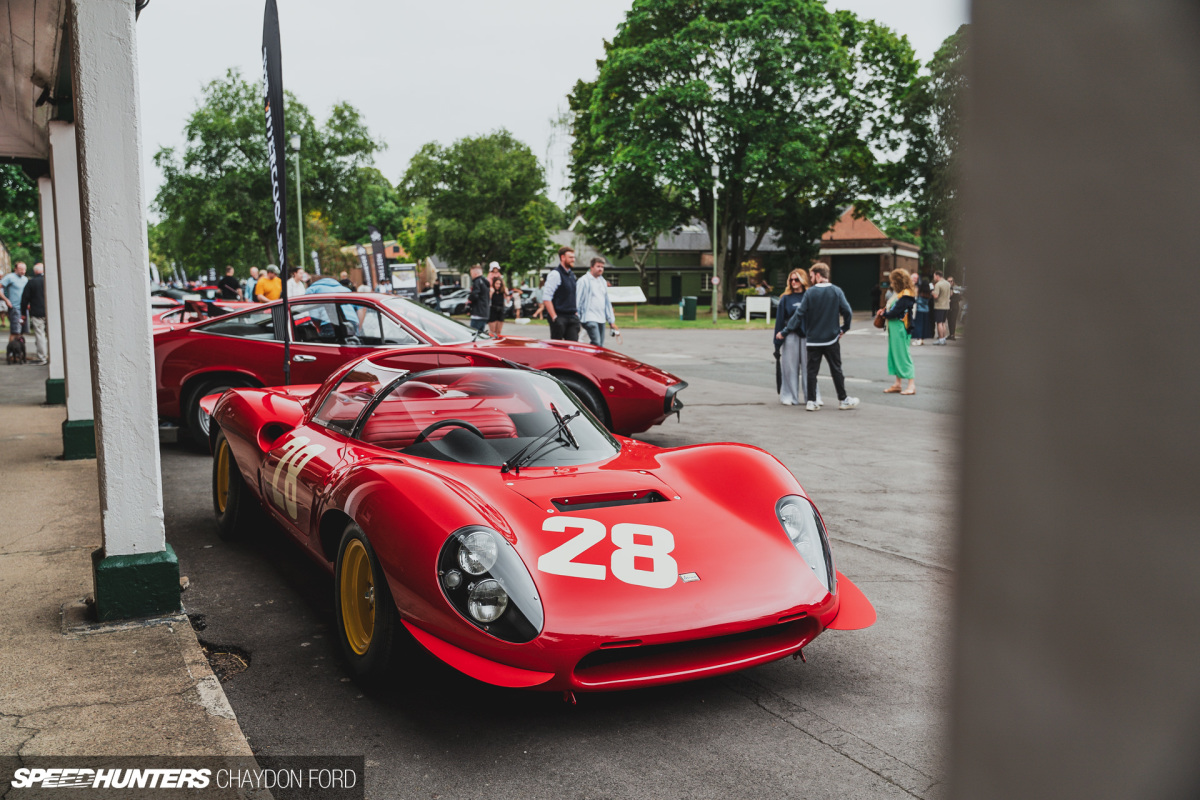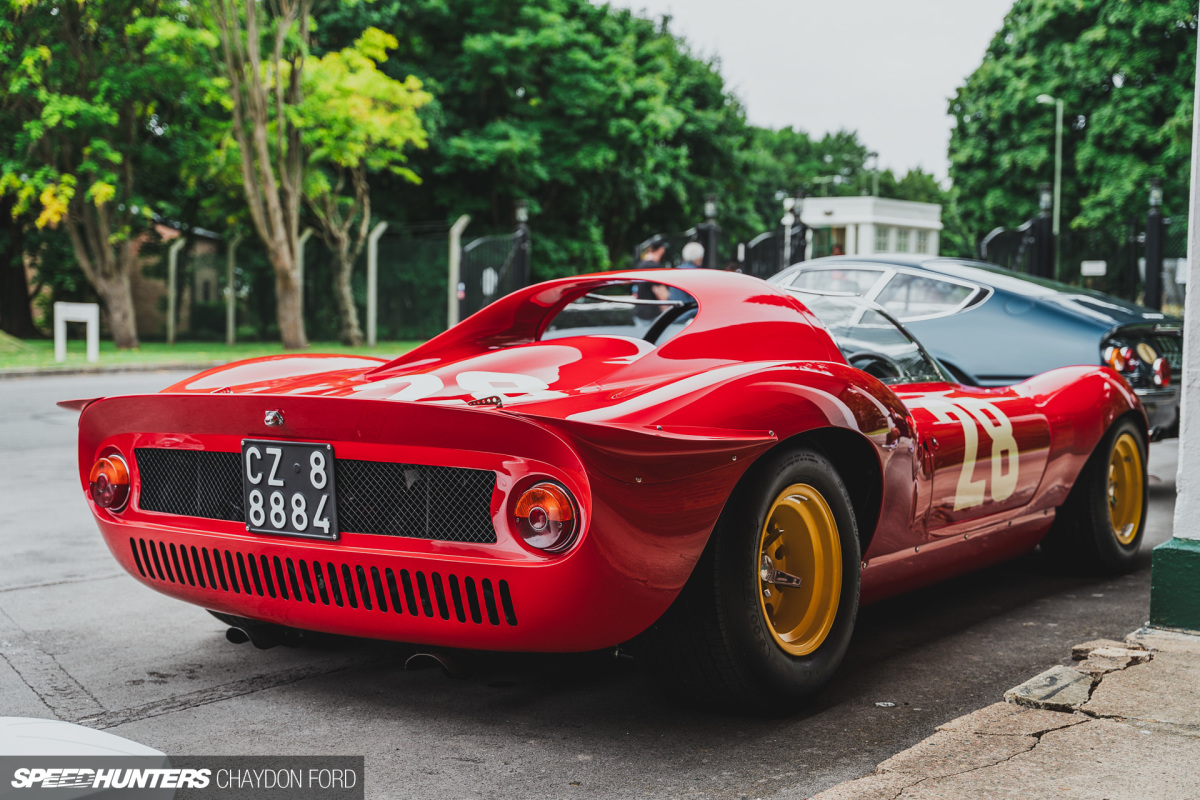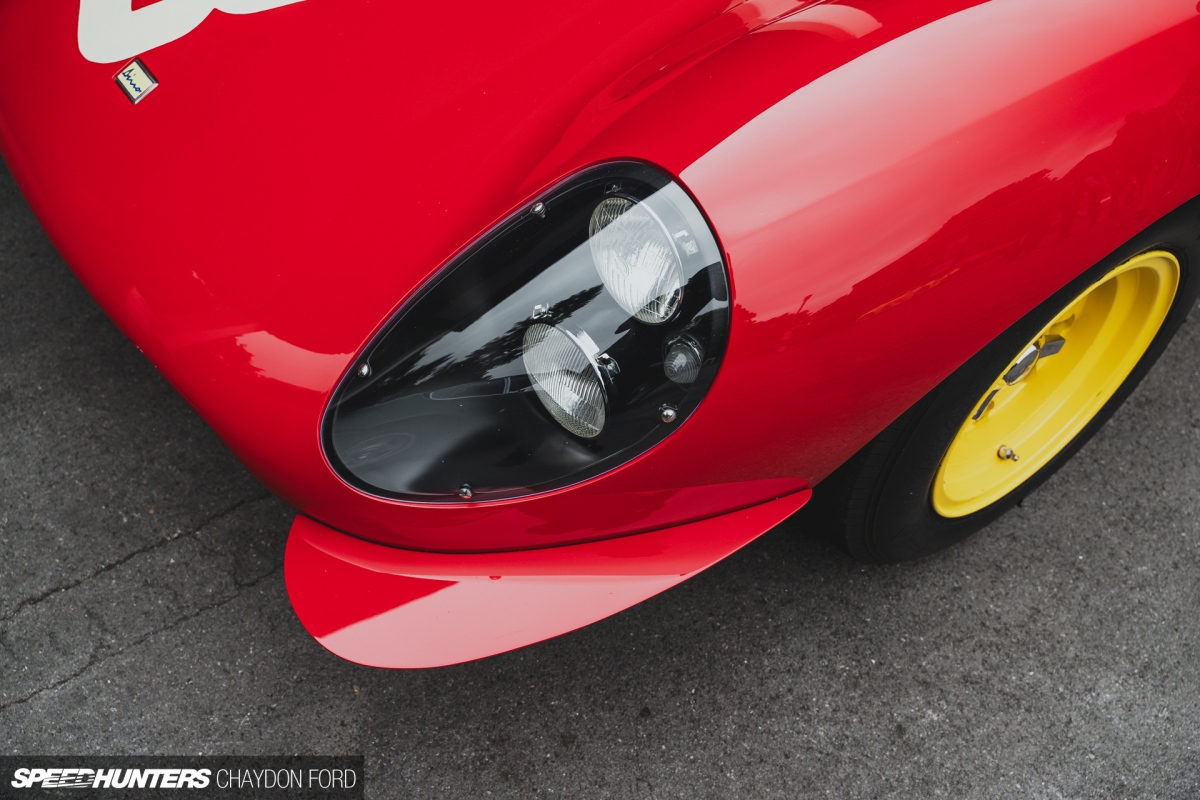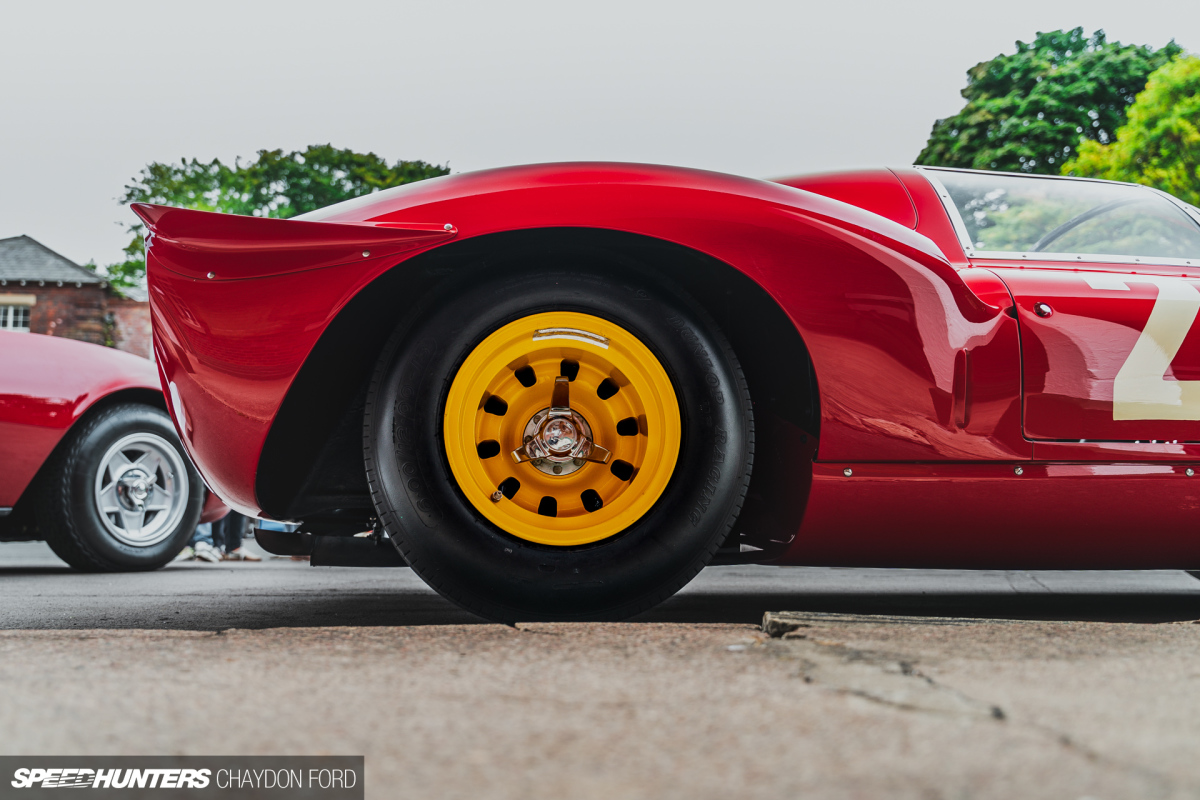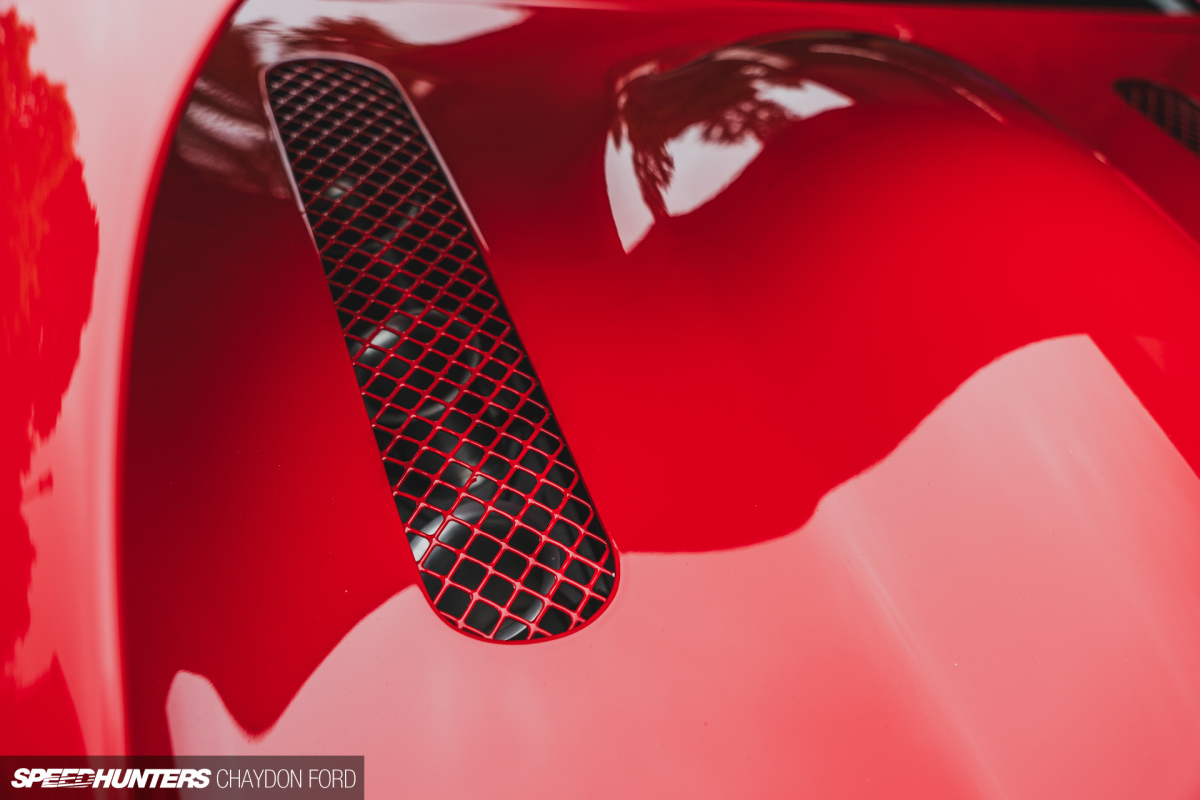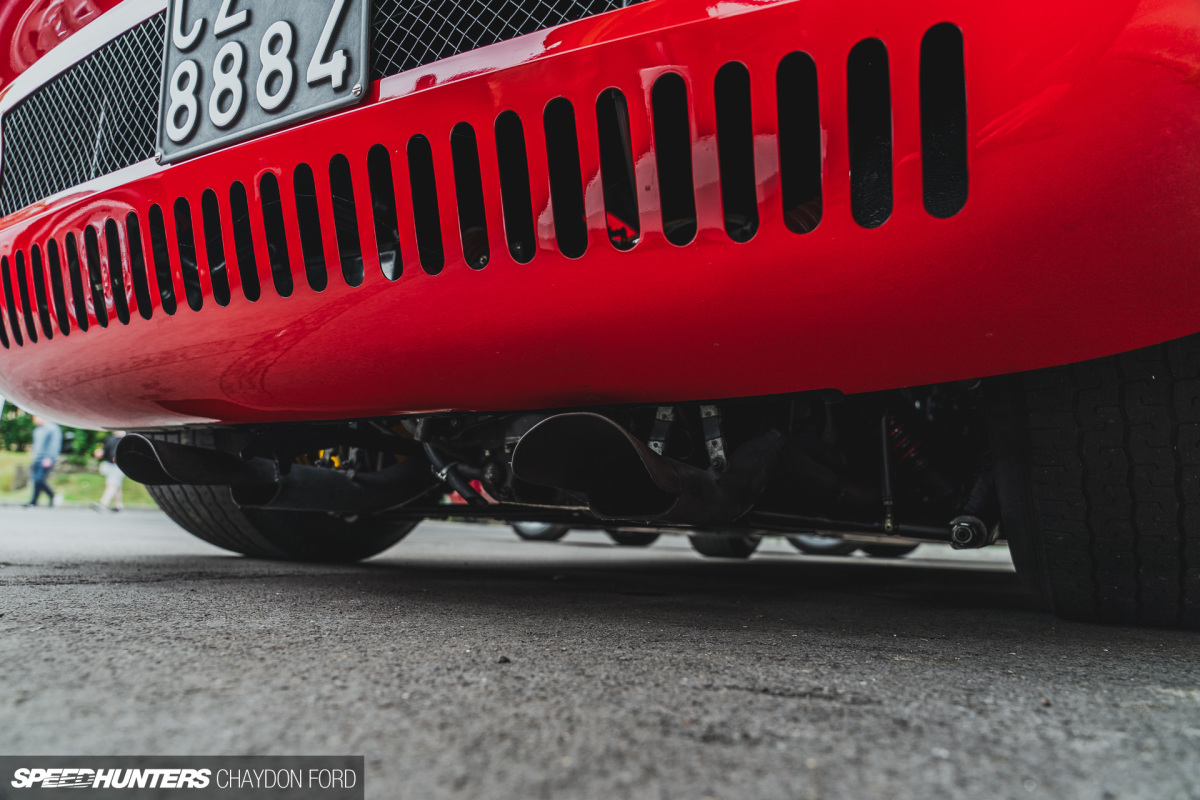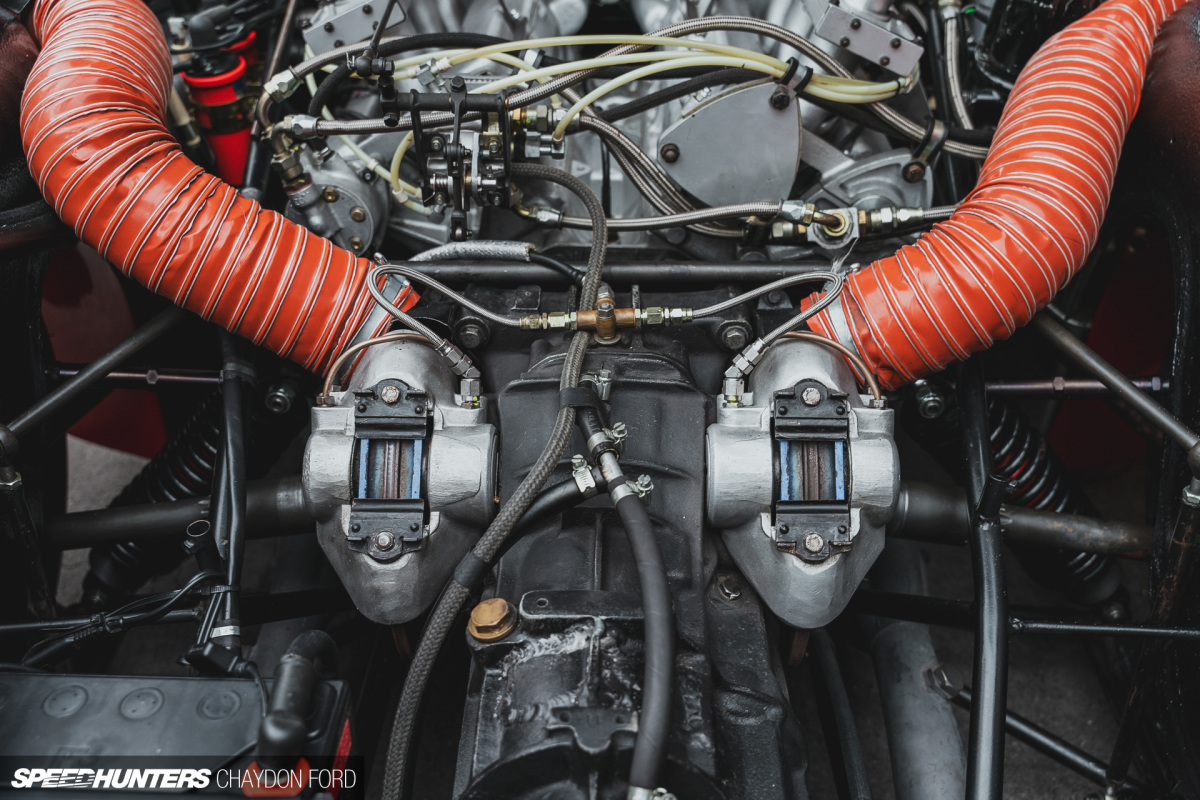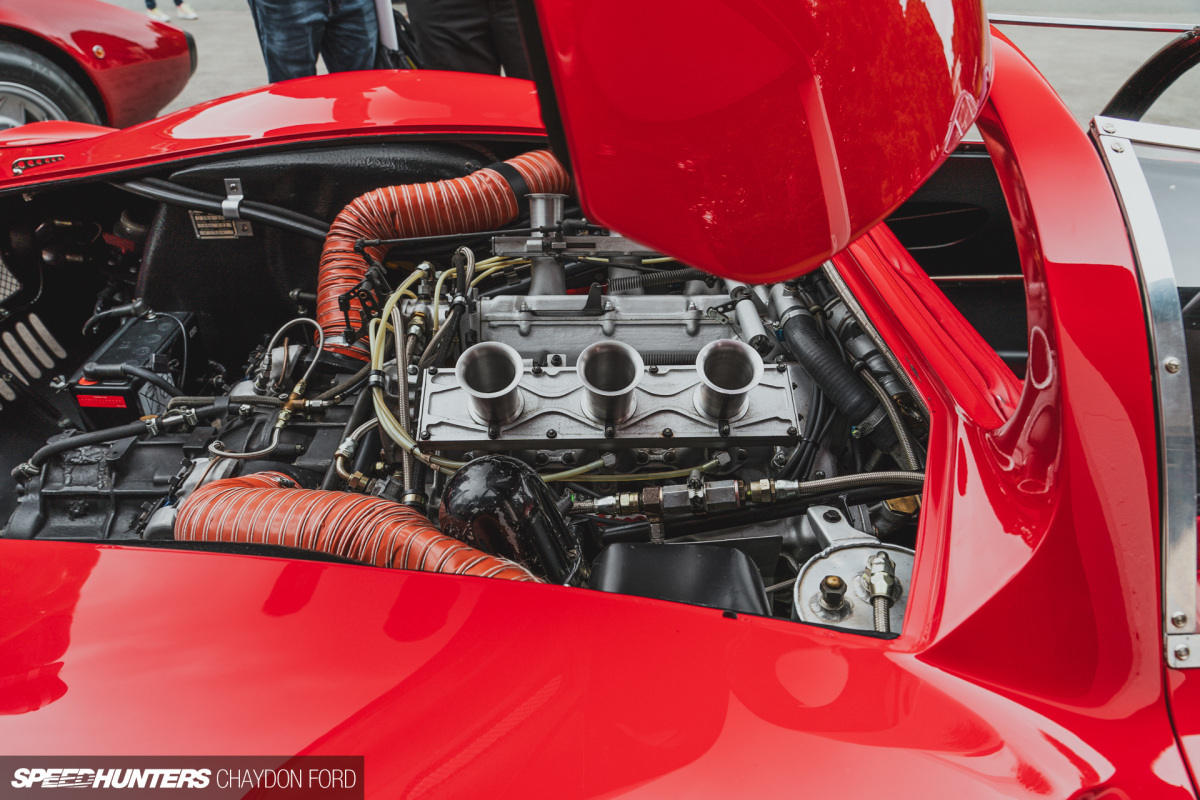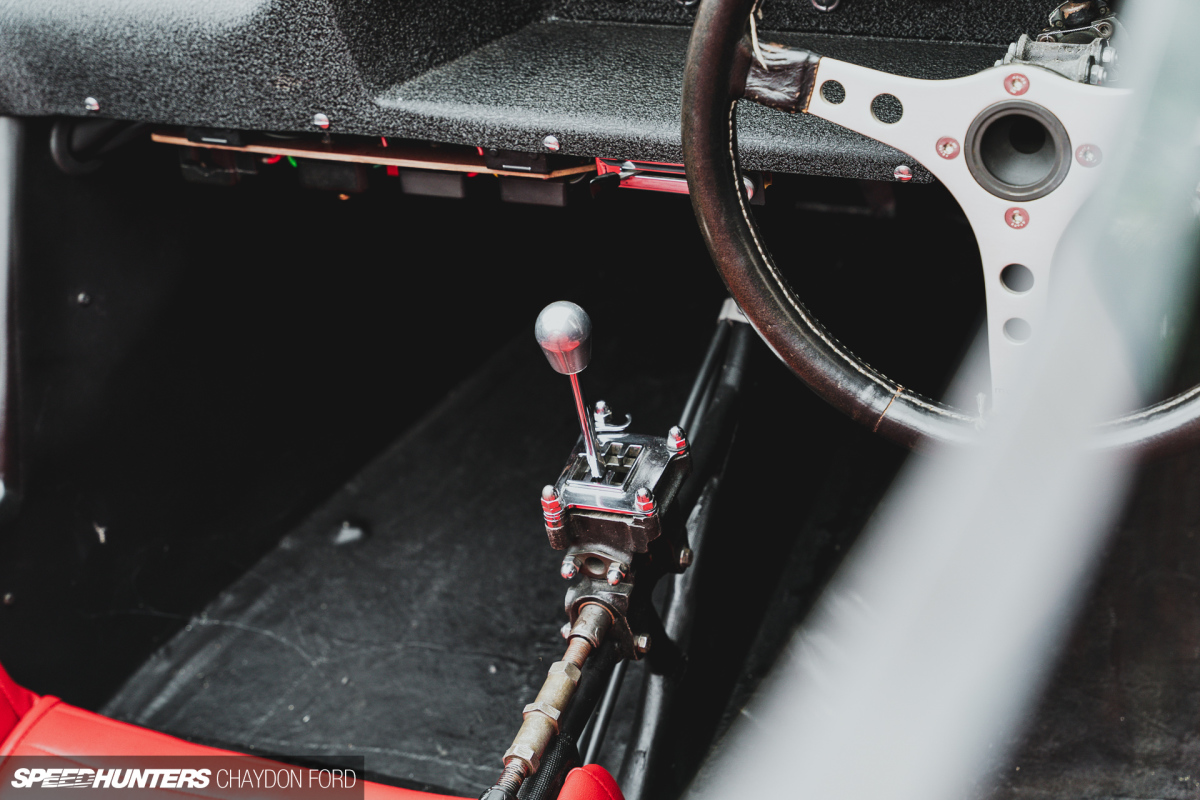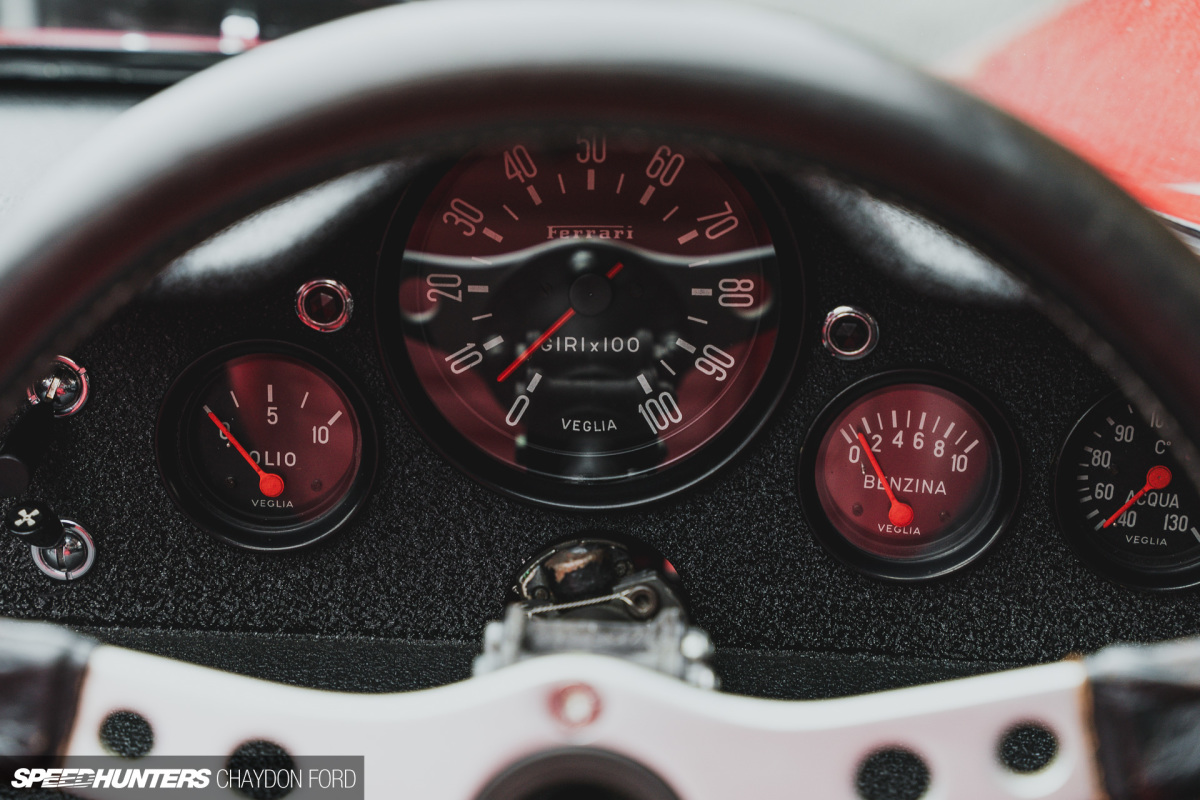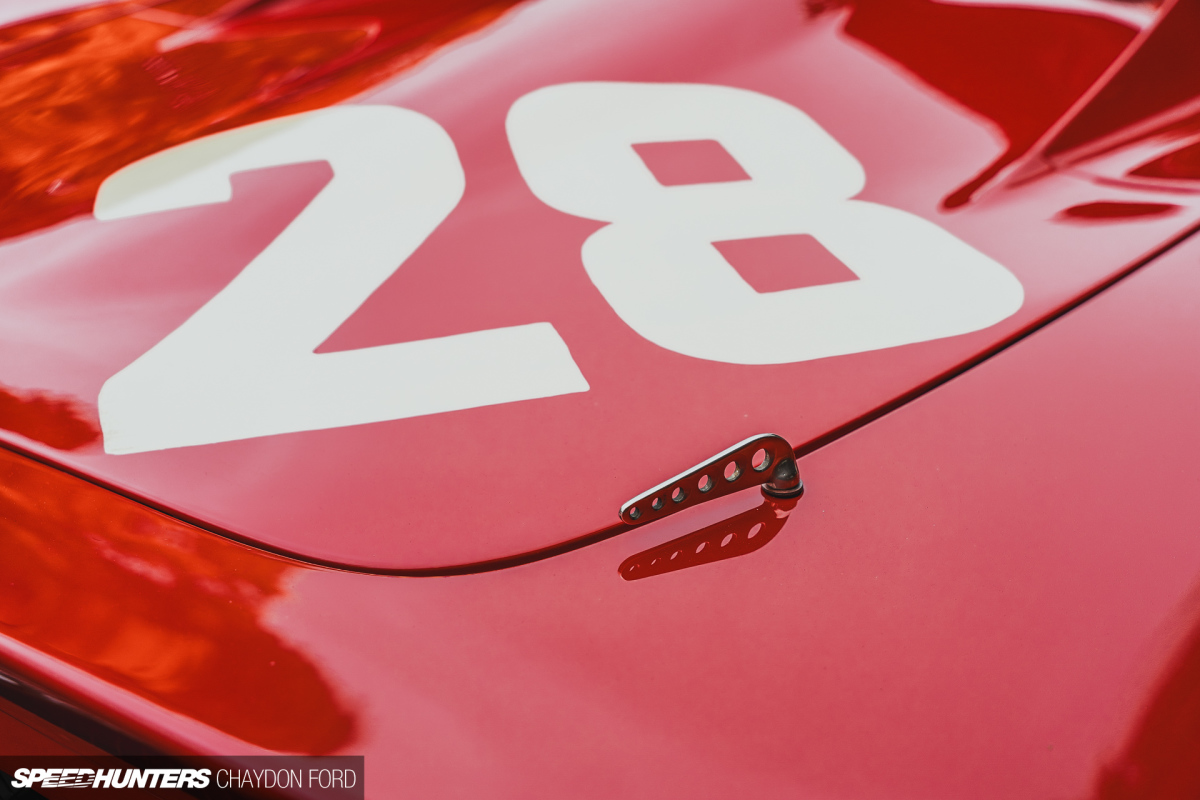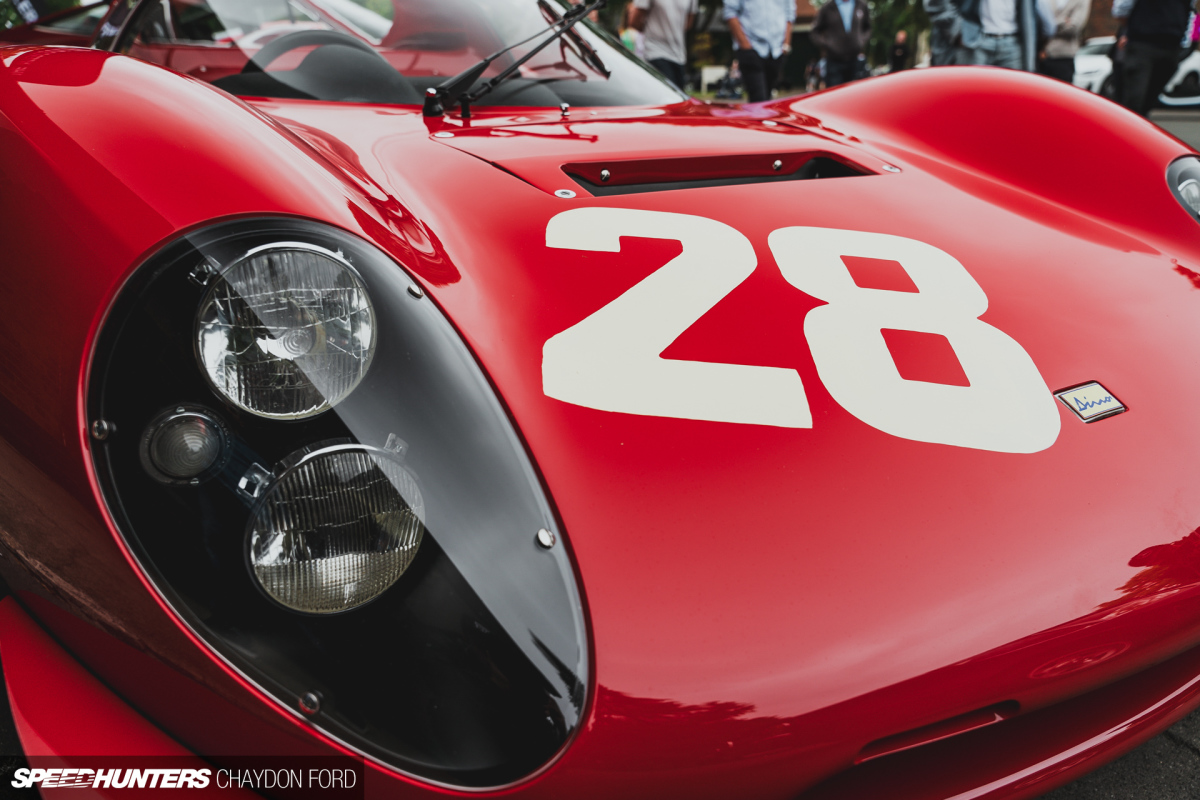Beauty was once defined as: “The proportional adjustment of all parts, so that one cannot add, subtract, or change without damaging the harmony of the whole.”
These words, written by Leon Battista Alberti, a Renaissance poet who lived 400 years before the invention of the motor vehicle, perfectly describe the essence of the Ferrari 206 S Dino Spyder. During the day Piston heads annual event at Bicester Heritage, I finally got the chance to see this car in person.


Set against the backdrop of what was once the Royal Air Force Guard House, the 206 S was elegantly displayed among other iconic Ferraris. Girardo & Co., one of Britain’s leading car dealers and the current custodian of the 206 S, offered a glimpse into their impressive inventory.

From a distance you might mistake the 206 S for a Ferrari P330, but as you get closer the smaller, lighter frame – over 200kg less than its brother – becomes apparent. Both models come from the renowned workshops of Carrozzeria Sports Cars and are often referred to as Drogo bodies, named after Piero Drogo, a founder of the design house.
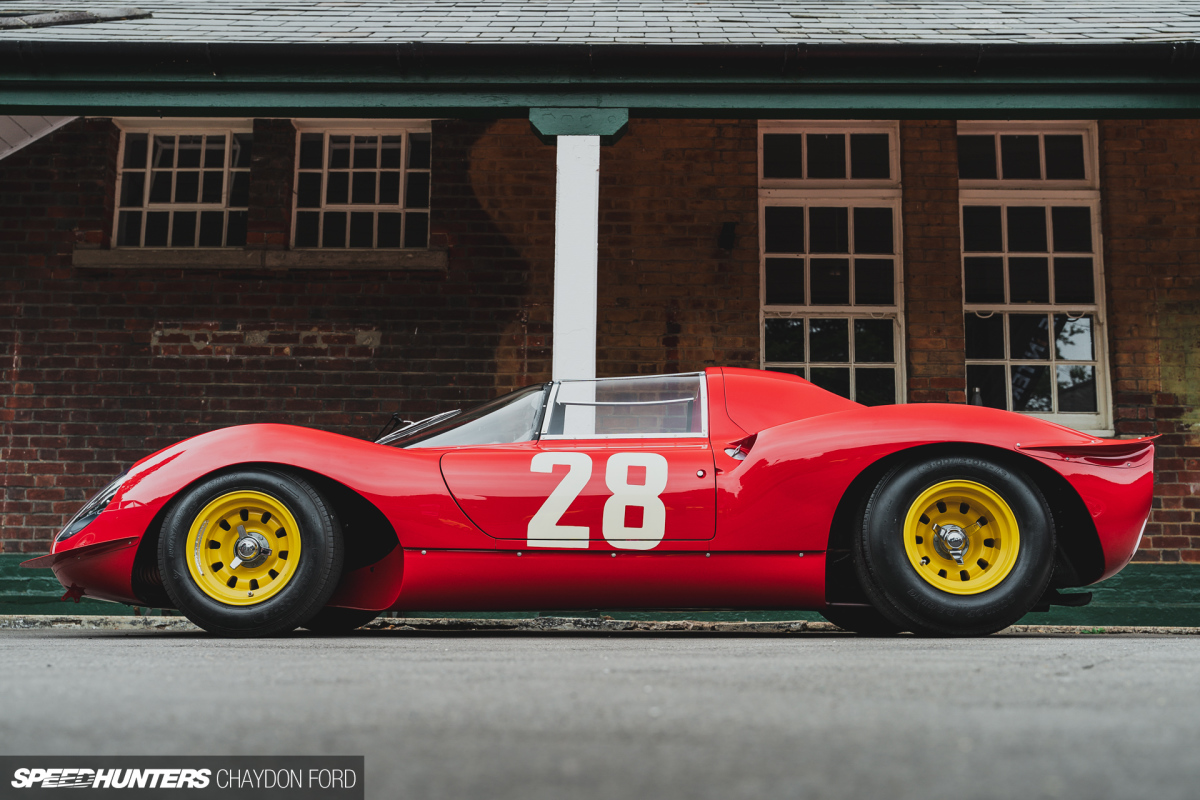
The 1960s ushered in an era of advanced aerodynamics and technology. It was no longer just about smooth, simple profiles and high spoke wheels, and the 206 S is a testament to this evolution. It showcases a gracefully flowing design, with a body that seems to wrap around the chassis like a silk dress, with few straight lines.


The more you think about it, the more subtle details emerge. A crease along the front fenders remains hidden from some angles but is sharply cut from others, tapering seamlessly into the bodyline before forming a break at the rear arches.

The 206 S is highly coveted among its peers. Only 18 were built, of which only 13 were in Spyder form. Of these, only two had the highest specification engine: the Formula 1 Tipo 233 S V6.

The engine’s mechanical brutality is at odds with the bodywork, emphasizing function over aesthetics. Six intake chimneys draw air through mesh panels in the deck lid, creating a unbelievable soundtrack.
For a taste of this sound, check out the video that Girardo & Co. has released – make sure you turn up the volume!
With 270 hp, the 206 S has an impressive power-to-weight ratio, only needing to propel 650 kg plus the driver.


The spartan interior further contributes to the weight reduction, with a minimalist dashboard dominated by a prominent central tachometer. Apart from the two low-back bucket seats, separated by the exposed shift bar and enclosed gear selector, little else shares the compact cabin.

The 206 S competed in the 1967 FIA World Sports Car Championship, racing alongside the P330/4 in the sub-2000cc class. Although it had limited success in endurance racing, the 206 S excelled in European hill climb events, where its lightweight construction, nimble handling and strong power proved a capable combination.

As time goes by, cars become larger and often flashier. The styling has shifted to angular designs, folds and surfaces with little cohesion across the product. Safety regulations have certainly played a big role in this, but if companies like Mazda can still produce the MX-5, maybe it’s time to ask ourselves: “Where did we go wrong?”
Chaydon Ford
Instagram: chaycore

